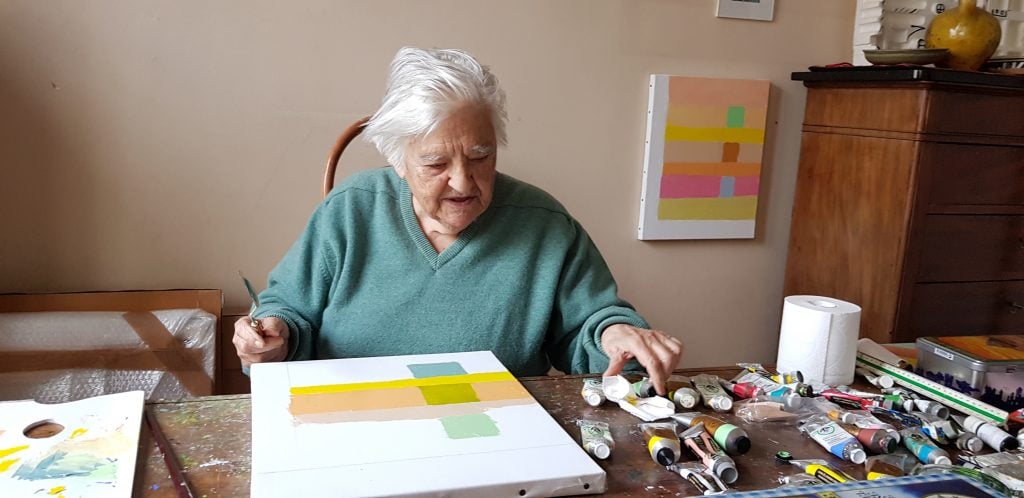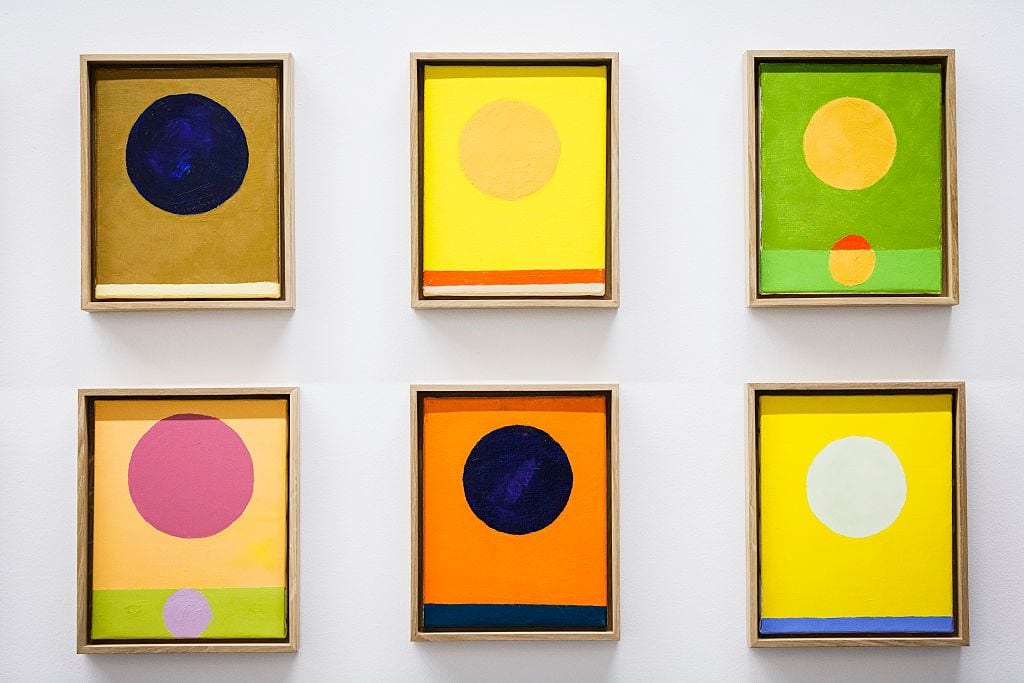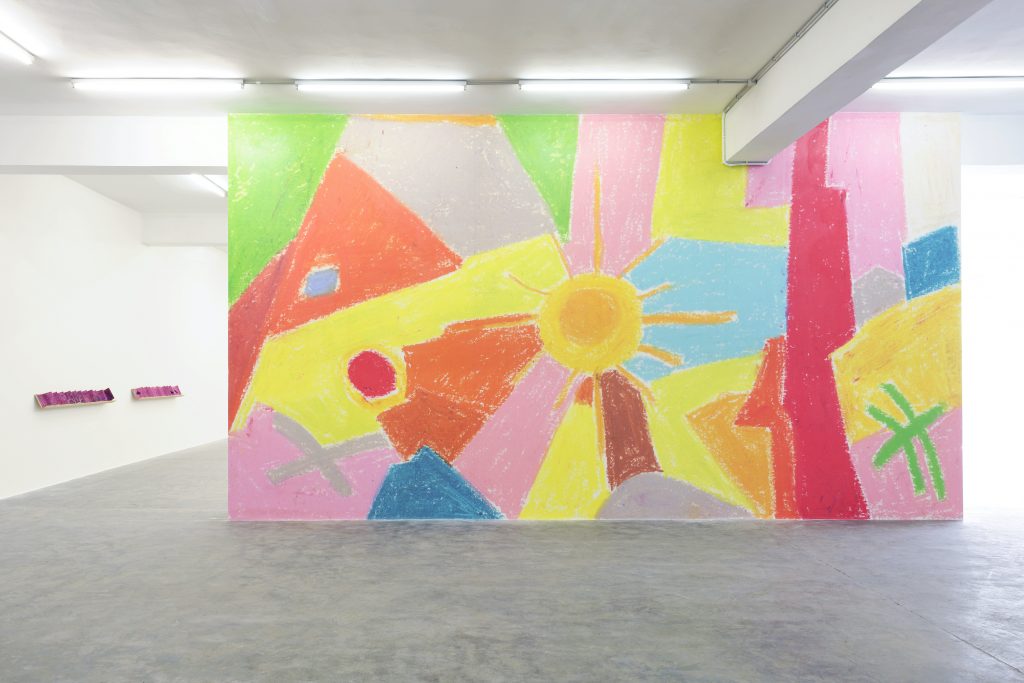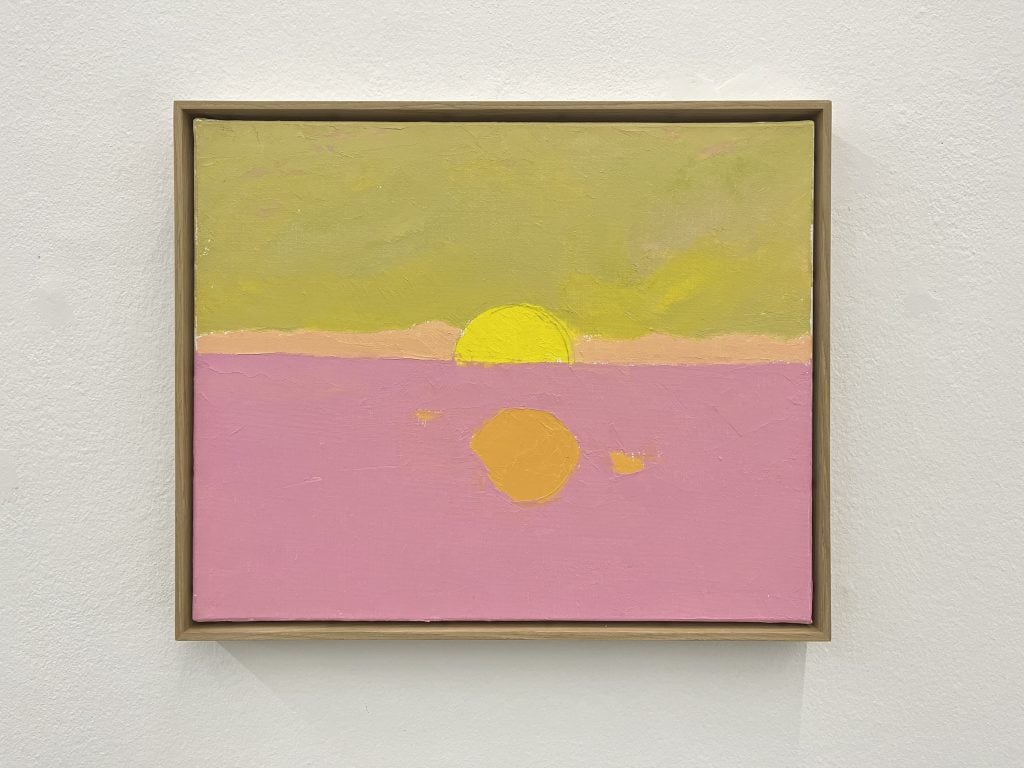People
‘She Gave Us Confidence’: Gallerists, Curators, and Friends Remember the Trailblazing Artist and Poet Etel Adnan, Who Has Died at 96
The Lebanese-American artist was also an acclaimed author.

The Lebanese-American artist was also an acclaimed author.

Kate Brown &
Naomi Rea

Etel Adnan, the Lebanese-American author, poet, and artist, died on November 14 in Paris at age 96. She is survived by her longtime partner, artist Simone Fattal, who confirmed the death to the media but did not identify a specific cause.
Throughout her six-decade career as an artist, Adnan became known for her geometric abstract works incorporating vibrant or pastel palettes, as well as her accordion-like works on paper that fold out combinations of drawings, text, and color. She often worked by smearing paint with a palette knife, applying colors directly from the paint tube, which could give her paintings the precision of cutouts.
Though she had become a household name in the art world by the time of her death, her painting practice was long overlooked. She is currently the subject of a survey, “Light’s New Measure,” on view at the Solomon R. Guggenheim Museum in New York. In May 2022, her first retrospective in the Netherlands will open at the Van Gogh Museum. “She had exceptionally sharp insights that she was able to convey in beautiful words, so to-the-point,” curator Sara Tas said about working with the artist to prepare the exhibition, which engages with the work of the famous Dutch painter. “Her passing is a great loss.”

Installation view of Etel Adnan’s 2016 exhibition “Le poids du monde” at the Serpentine Galleries, London. Photo: Tristan Fewings/Getty Images for Serpentine Galleries.
“There are so many memories of Etel, as we worked together for so many years,” curator Hans Ulrich Obrist told Artnet News. “There are so many dimensions to her works—she worked in architecture and film as well as writing and art—in this extraordinary way, she brought together these diverse fields. Her paintings address hope, while her writings address topics of politics and war.”
Obrist’s popular Instagram series of handwritten notes from artists was inspired by Adnan when she wrote a little note for him after a walk: “Love doesn’t die when we die. It is our resurrection.” The curator frequently visited with the artist and Fattal, and remarked on how Adnan’s practice continued to evolve right up until the end of her life, including a recent shift from color to “poetic” works in black and white ink this past spring. “Her works gave those who would meet them so much courage,” he added. “We will miss her so much….Her work will continue to radiate for centuries to come.”
David Cleaton-Roberts, director of London’s Cristea Roberts Gallery, which staged a solo exhibition of Adan’s etchings in the gallery in 2019, also spoke to her continued development in her practice. “That she found expression in printmaking so late in her life…was a testament to her deep curiosity and engagement with the world around her,” he said.

Exhibition view of Etel Adnan’s “The Uprising of Colors” (2020). Exhibition view at Sfeir-Semler Gallery, Beirut. Courtesy of Sfeir-Semler Gallery Beirut/Hamburg and the estate of the artist.
Adnan was born in 1925 in Beirut (under French administration after World War I) to a Syrian father and a Greek mother. She grew up in Lebanon before moving to Paris to study philosophy at the Sorbonne, followed by graduate studies at the University of California, Berkeley, and Harvard University.
She returned to Lebanon in 1972, where worked as an editor for two daily newspapers and met the Damascus-born artist Simone Fattal, with whom she fled the country to Paris when civil war broke out in 1975.
While she worked most of her life as a writer, authoring a critically acclaimed and widely read novel about the war she fled called Sitt Marie Rose in 1977, Adnan shifted her focus to painting amid growing discomfort with the political implications of writing in the French language during the Algerian war of independence.
“Etel was light, life, beauty, generosity: a universal artist!” Adan’s Beirut-based gallerist since 2009, Andrée Sfeir-Semler, said in a statement. “I am heartbroken and will miss her dearly; but we will always remember her enormous generosity, her kindness, her wisdom.”
“Etel taught us how important memory is without nostalgia, and made physical in words and images the beauty rendered from the light and darkness of the 20th and 21st centuries,” gallerist Mary Sabbatino, who represented Adnan at Galerie Lelong and Co, told Artnet News, adding that the her loss is “irreparable.” Sabbatino recalled sharing meals with Adnan at her favorite pizzeria in Paris as among the highlights of her career. “We talked of many things: politics,—she loved Bernie Sanders and felt the U.S. needed a revolution—painters that she loved,—she was so happy to show in the Centrum Paul Klee… poetry and friends in common, and her unusual upbringing—imagine a young Lebanese woman of her generation going to California alone–and never of ‘the art world.’”

Etel Adnan, Untitled (2021). Courtesy of Sfeir-Semler Gallery Beirut/Hamburg and the estate of the artist.
Though she began to paint in her early 30s, her breakthrough moment in the European art world only came much later when, in her late 80s, she was included in Documenta 13 in Kassel, curated by Carolyn Christov-Bakargiev in 2012.
“I remember one evening after a long day’s work in 2012 installing Documenta 13, we were preparing dinner in my kitchen in Kassel with Simone,” Christov-Bakargiev told Artnet News. “Out of the blue [Etel] said, ‘If you had only invited me ten years ago, when I was young, in my 70s, I would have had a lot more energy.’ We stopped, then we laughed together, as only she could show us how.”
Soon after this Adnan’s gifts began to be recognized globally. She was included in the Whitney Biennial in New York in 2014—the same year she was awarded France’s highest cultural honor, the Ordre de Chevalier des Arts et des Lettres—and in an exhibition in 2016 at the Serpentine Galleries in London.
Christov-Bakargiev described Adnan as an artist who stood for women and their power. “She gave us confidence, and for that I loved her,” she said, describing her as “a wise and strong old woman, an ancient child,” who “loved mountains, the sea, colors, people, friends, [and] conversation.”
“Yesterday, I asked a young woman who also knew her if she was sad for her passing, and she replied that she felt grateful,” said Christov-Bakargiev. “Today, I remember her verse, ‘the morning after / my death / we will sit in cafés / but I will not / be there / I will not be.” Etel Adnan exits the scene, but we will continue to write poetry and paint and think and act.”